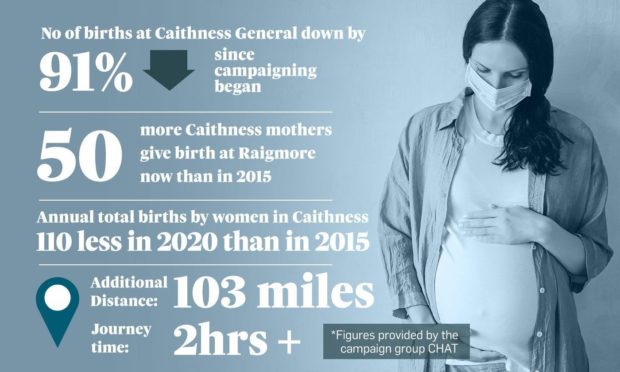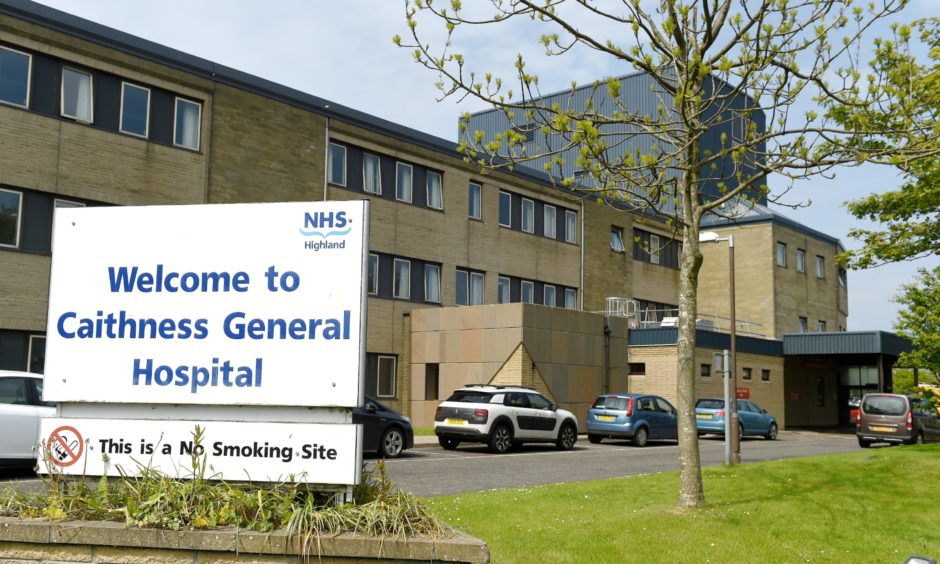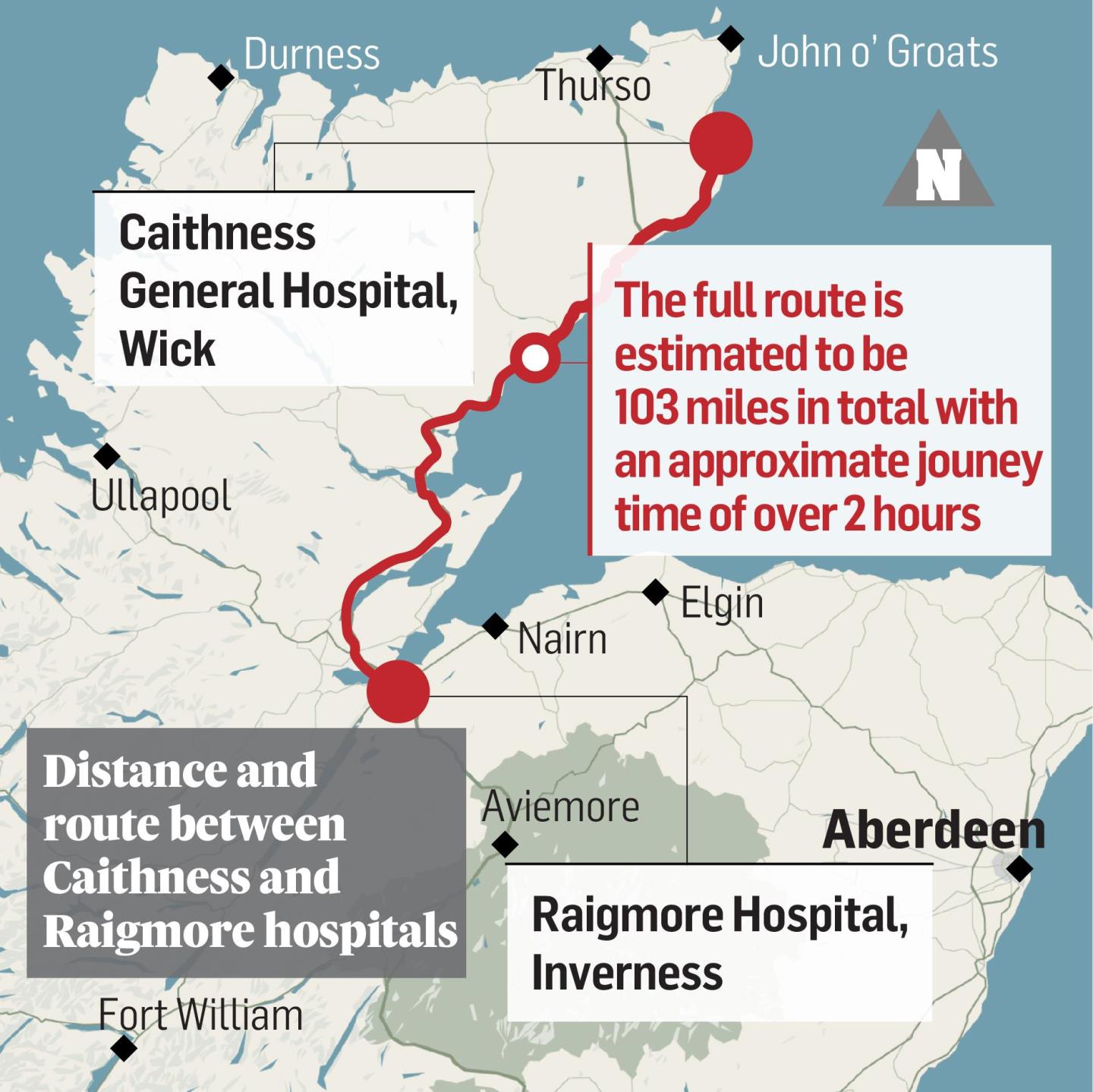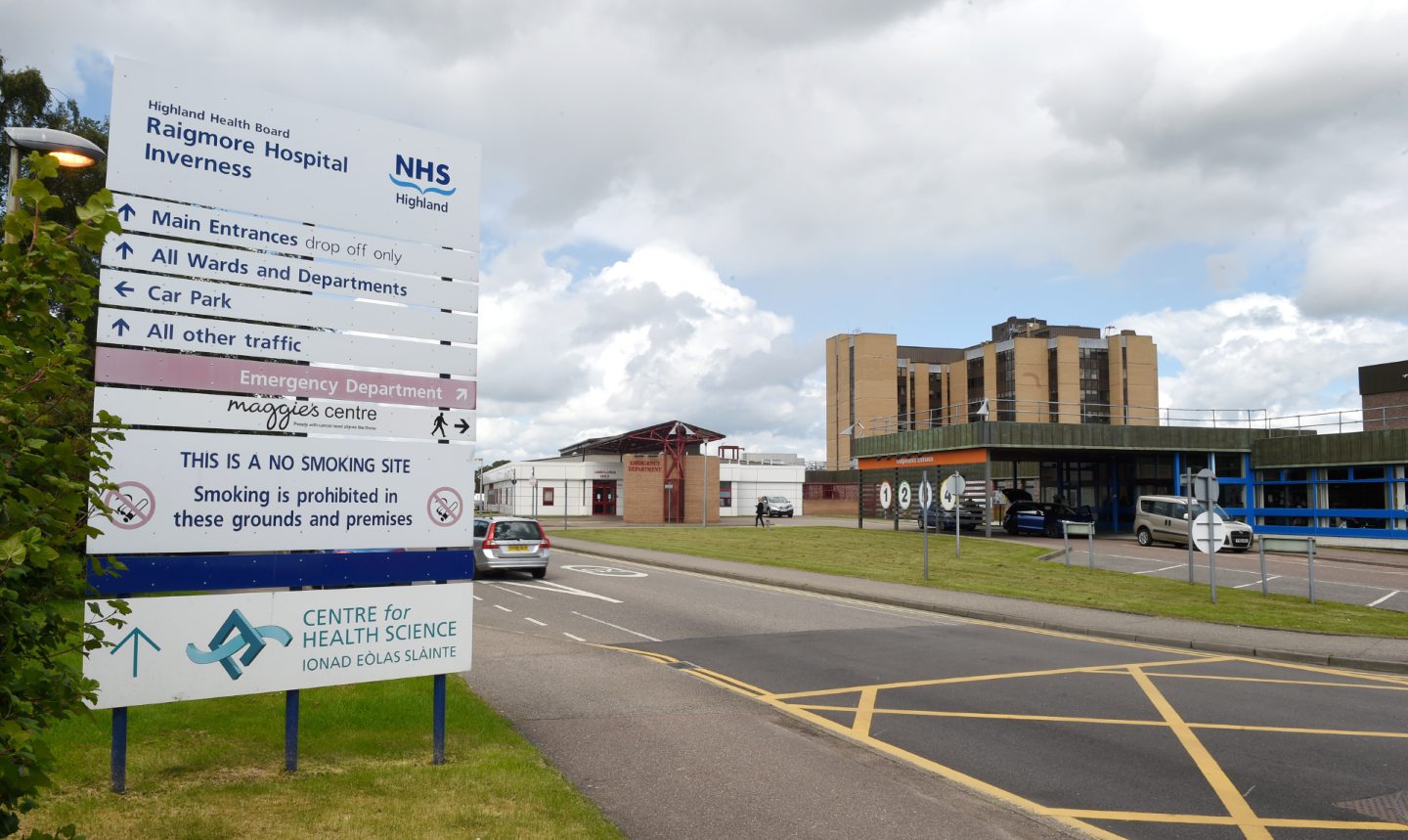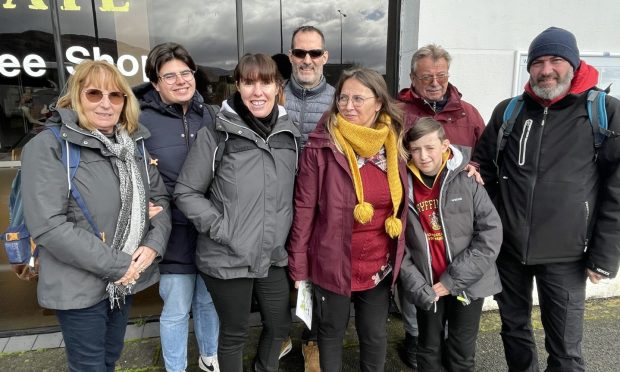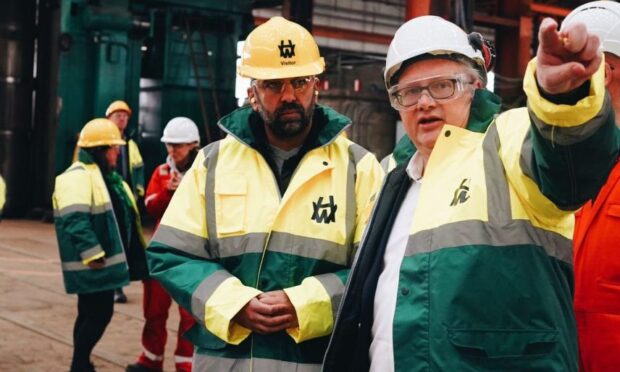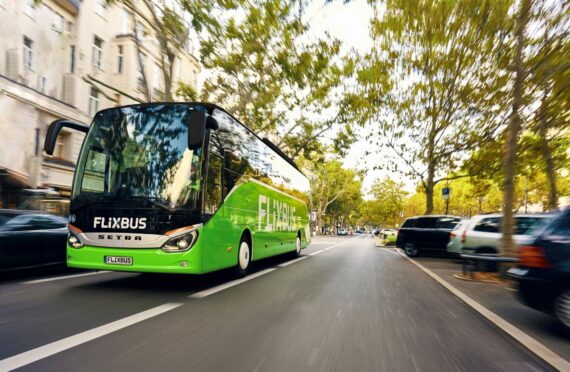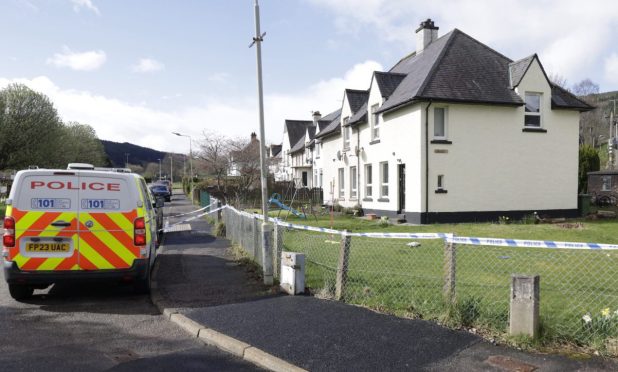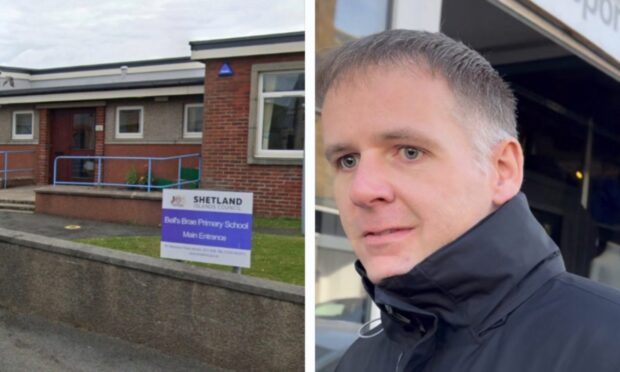The time for talking is over: action is required now.
That is the view of campaigners who have fought tirelessly for more than five years to prevent pregnant Caithness women from facing a journey of more than 100 miles to give birth.
Since 2016, the majority of pregnant women in Caithness have had to give birth at Inverness’s Raigmore Hospital due to a lack of consultants to run the maternity unit.
Births in Caithness have dropped by more than 90%
Births at Caithness General Hospital (CGH), the county’s largest medical facility, have declined by more than 90% between 2015 and 2020.
There were just 15 births recorded last year at CGH.
The overall number of births registered to mothers across the county has dropped by 110, when compared to the 266 recorded in 2015.
Caithness Health Action Team (Chat) believe the decline in overall births is directly down to the downgrading of maternity services, which has caused anxiety and stress in would-be mothers.
The problems have led to many Caithness mums opting to relocate closer to Raigmore in the weeks leading up to their birth, with some also requesting inductions or elective sections in order to avoid the unnecessary stress and anxiety.
Mother facing prospect of travelling alone
One pregnant Caithness woman has shared her account of the fears and anxieties she is currently experiencing ahead of delivery of her second child.
She has highlighted a common issue where she has no access to travel other than public transport.
The woman also said she has been told that if she were to be taken to Inverness by ambulance, her birthing partner, the child’s father, would not be able to travel with her, leaving her to travel alone.
‘It’s affecting my mental health really quite badly’
She said: “I feel as though I’m being forced into having an induction again.
“I really don’t want that as last time I had to spend five days in Inverness waiting for anything to happen and I had a far from good experience.
“I don’t want to leave my two-year-old for that long either – I’ve never even spent one night apart from her.
“It’s affecting my mental health really quite badly.”
She added: “I feel unfairly treated, it’s as though the health of my baby and I aren’t important, all because of my location.
“I really would love to give birth in Wick but I can’t take the risk, as if something does go wrong I could risk the life or my baby and or my own life due to not having consultant doctors present.”
‘It was overwhelmingly stressful’
Sharon Dismore has twice had to leave her home in Caithness to give birth in Inverness.
She has said that on both occasions the stress over whether her partner could join her or not added extra worry.
Miss Dismore said: “When you are pregnant there is a lot of not knowing. You don’t know when you are going to go into labour or you don’t know if the baby is going to be healthy.
“There is a whole myriad of things that as a first-time mum I was concerned about.
“But then to add the fact that you are going to be in labour, the first time you have ever done that, on your own and you might not be with your partner, who is left to get a bus behind you or pay a lot for a taxi – it was overwhelmingly stressful.”
Each mother has a tale to tell
Miss Dismore feels like mothers in the far north are still not being listened to.
She added: “I sit in the playground and I talk and have met other mums who have had awful experiences and we are just getting on with it because you are so grateful to get home with a healthy baby.
“But it is just so much stress added in.
“We have all got our own little story when it comes to the birth of our children. Mums who have had to drive down in the snow to one mum who gave birth miles apart to twins – on what planet is that okay?”
Time for talking is over
Ron Gunn, vice-chairman of Chat, said: “The people of Caithness had no say in the change and were told it was on safety grounds, yet the model they replaced it with cannot be classed as safe.
“The A9, classed as one of the most dangerous in Scotland, is challenging at the best of times.
“Since 2018 there has been a gradual decline in the number of Caithness women giving birth.
“We know of young couples who have decided to move away from the area to have their children and others have told us that they have been put off or decided not to have children because of the trauma and worry of having to take the two and a half hours plus trip.
What does NHS Highland say about the concerns?
NHS Highland says local birth is an option for women who have low-risk pregnancy but recognises that support may be required for families who require a stay in Inverness.
The health board has said travel costs will be covered if a birth is booked at Raigmore and has said it is keen to engage in conversation with mothers over their concerns.
NHS Highland has apologised for issues where mothers have been turned away when turning up for induction due to a shortage of staff.
A spokesman said: “We apologise for any anxiety this may cause.
“We are working to address the staffing pressures within maternity at this time.”
A Scottish Government spokesman added the provision of maternity services should be as close to home as possible, but “this has to be balanced with ensuring the safety of mother and baby”.
